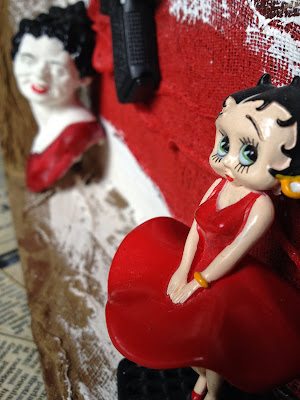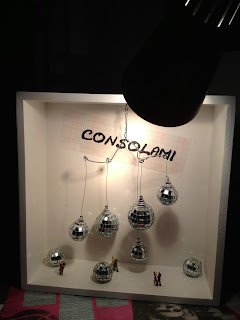IL RE DI POGGIOREALE
THE KING OF POGGIOREALE
teca rammemorante
recollection display case
Giuseppe Navarra riportò a Napoli il Tesoro di San Gennaro e da allora fu soprannominato "Il Re di Poggioreale". I gioielli del Tesoro di San Gennaro sono valutati più di quelli della Corona d'Inghilterra e quelli dello Zar di Russia. Le prime testimonianze della liquefazione del sangue risalgono al XIV° secolo.
Persino Napoleone, infatti, incline al saccheggio di opere d’arte,
non osò profanare il Tesoro di San Gennaro, anzi, suggerì, nel 1808, al
laicissimo cognato Gioacchino Murat, allora Re di Napoli, di donare al
Santo un ostensorio, ancora oggi tra i più finemente decorati di tutta
la collezione. Anche il Vaticano aveva, per alcuni anni, temporeggiato
la restituzione del Tesoro quando, a causa della seconda guerra
mondiale, era stato trasferito a Roma. Memorabile resta l’impresa
del devotissimo boss Giuseppe Navarra, detto “ ’O Re di Poggioreale”,
che, dopo il conflitto, nel 1947, corse i rischi del trasferimento
del preziosissimo carico da Roma a Napoli. Alla fine del secondo conflitto mondiale nessuno osava accollarsi l'onore di trasportare un tesoro così prezioso per strade dissestate e infestate dai malviventi. Polizia e carabinieri non avevano uomini a sufficienza e le autorità civili ed ecclesiastiche non sapevano a chi rivolgersi. Si offrì allora volontario per l'operazione il signor Michele Navarra, detto Giuseppe, 49 anni ed ex palombaro. Egli partì per Roma a recuperare il tesoro con una strana compagnia dell'anello: il novantenne Principe Stefano Colonna di Paliano. Con una lettera autografa ritirarono in Vaticano il tesoro ed iniziarono un avventuroso viaggio di ritorno. Quando riconsegnarono il Tesoro alla città, il cardinale Alessi Ascalesi gli offrì una ricompensa e Navarra rifiutò il denaro chiedendogli solo di poter baciare il sacro anello e di devolvere ai poveri della città il denaro che gli era stato offerto come ricompensa. Questo gesto contribuì ad accrescere la sua fama: era in realtà un personaggio equivoco che si era arricchito con traffici poco chiari prima a Marsiglia poi a Napoli.
(da www.simmenapulepaisa.com )
(da www.simmenapulepaisa.com )
 |
| Giuseppe Navarra "Il Re di Poggioreale" |
Giuseppe Navarra took the Treasure of San Gennaro back to Naples, and from then on he was nicknamed "The king of Poggioreale". The jewels of the Treasure of San Gennaro are valued more than those of the Crown of England and those of the Csar of Russia. The first evidence of the liquefaction of the saint's blood goes back to the 14th century: a miracle that occurs every year for the believers in Naples. San Gennaro is so important for the people of Naples that even Napoleon, prone to embezzle works of art, did not dare to profane the Treasure: in fact he suggested in 1808 to his in-law Gioacchino Murat, king of Naples, absolutely secular, to offer the saint a holy monstrance, still among the most highly decorated of the whole collection. During the Second World War, the Treasure had to be transferred to Rome for some years and even the Vatican stalled for some years its return to Naples. Memorable remains the endavour by Giuseppe Navarra, most devoted boss, called "The King of Poggioreale" (the area of Naples where he came from) who, after the war in 1947, ran the risk of transferring the precious cargo from Rome to Naples. At the end of the Second World War no one dared to take the honor of carrying a valuable treasure through devasteted roads infested by criminals. The police didn't have enough men and the civil and ecclesiastical authorities did not know where to turn. Then he volunteerd for the operation. Mister Michele Navarra, aka Giuseppe, 49 years old, former driver, left Naples towards Rome with a strange Fellowship of the Ring: the nonagerian Prince Stefano Colonna Paliano. With an autographed letter to the Vatican, he withdrew the Treasure and then began an adventurous trip back home. When the Treasure was finally handed back to the town, Cardinal Alessi Ascalesi offered him a reward, but Navarra refused the money, asking him only the privilege to kiss the sacred ring and asked his reward to be converted into a donation to the poors of the city. This fact helped to increase his fame: actually he was a shady character, who had become rich with shady trades, first in Marseille then in Naples.
(from www.simmenapulepaisa.com )
Questa teca è ispirata a Napoli, prendendo spunto da un episodio storico che ne esprime lo spirito ma che non può spiegare questa città così distante dalla mia.
This display case is inspired by Naples, taking the cue from an historical event that expresses its spirit but then is not suffcient to explain this town, so far from my own.
This display case is inspired by Naples, taking the cue from an historical event that expresses its spirit but then is not suffcient to explain this town, so far from my own.
Amo Napoli perché mi ricorda New York, specialmente
per i tanti travestiti e per i rifiuti per strada. Come New York è una
città che cade a pezzi, e nonostante tutto la gente è felice come quella
di New York.
I love Naples because it reminds me of New York, especially for the many transvestites and garbage on the streets. As New York, it is a city falling apart and, in spite of this, people are as happy as the ones in New York.
I love Naples because it reminds me of New York, especially for the many transvestites and garbage on the streets. As New York, it is a city falling apart and, in spite of this, people are as happy as the ones in New York.
Andy Warhol
A Napoli ognuno vive in una inebriata dimenticanza
di sé. Accade lo stesso anche per me. Mi riconosco appena e mi sembra di
essere del tutto un altro uomo. Ieri pensavo: “O eri folle prima, o lo
sei adesso”.
In Naples everyone lives in an intoxicated self-forgetfulness. The same happens to me, here. I can hardly recognise myself and it seems to me I am another man. Yesterday I thought: "Either you were crazy before or you are crazy by now".
In Naples everyone lives in an intoxicated self-forgetfulness. The same happens to me, here. I can hardly recognise myself and it seems to me I am another man. Yesterday I thought: "Either you were crazy before or you are crazy by now".
Johann Wolfgang Goethe, Viaggio in Italia,
1817
Collage e assemblage, oggettini in plastica, ramo di spine, in cornice di legno cm. 12x37x10, 2013
Collage and assemblage, little plastic objects, in wooden frame 12x37x10 cm., 2013



















































